


16 July 1948 dawned damp and gloomy as test pilots Mutt Summers (who flew the prototype Spitfire) and Jock Bryce (who would go on to fly the prototype VC10) forsook their normal office in the Vickers flight test building at Weybridge for a day at the company airfield a few miles away at Wisley on the London to Portsmouth road. Earlier, a revolutionary aeroplane had been dismantled at Weybridge, trucked down to Wisley and re-assembled ready for its maiden flight. As Mutt Summers flew the plane off the grass runway for its first appointment with flight, motorists on the A3 would have wondered what they were hearing as the loud shrill of four Rolls Royce Dart turboprops lifted the aircraft into the air for the world’s first flight of a turboprop airliner. The Viscount had arrived.

So what was the ‘back story’ for this momentous flight? In 1943 the Brabazon Committee had met to thrash out the requirements for the future British civil aircraft industry after the Second World War ended. One of the types they specified was an aircraft for short to medium range flights, known as the Type 2. Originally this aircraft type was to be piston-powered but Vickers’ Chief designer Rex Pierson had strong feelings that the turboprop engine currently in development would be the way forward. After talking to the committee in 1944 Pierson convinced them to later split the Type 2 requirement into Type 2A (piston engine) and Type 2B (turbine engine).
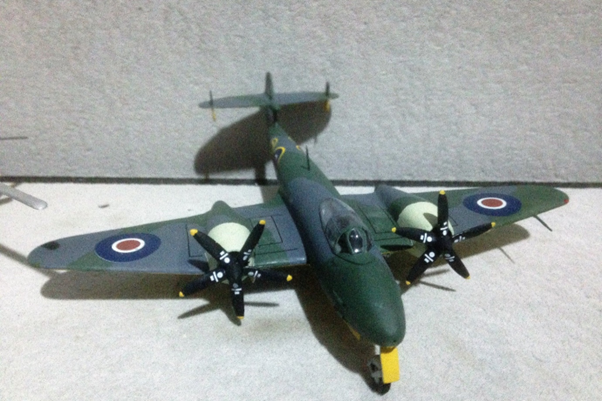
Vickers had already begun looking at the possibility of adapting its cancelled Windsor bomber into an airliner but then turned their attention to further developing the new Viking airliner into a turboprop aircraft. A Viking was modified with two Nene jet engines for research purposes and became the world’s first jet transport. After receiving proposals from the aircraft industry for types to meet these requirements, the Brabazon committee awarded the Type 2A to Airspeed and their Ambassador and the Type 2B to Vickers for their Viking-based aircraft known as the VC.2. BEA was showing an interest in these aircraft as a replacement for its Viking fleet and thus showed a keen interest as the designs progressed. They did however ask for the passenger capacity to be increased from the Brabazon requirement of 24 to 32. In late 1945 the government considered progress on the Vickers design to be rather slow and invited other manufacturers to offer their designs for the turboprop airliner. The only one that would come to anything was the Armstrong Whitworth Apollo powered by four Mamba turboprops. Two would be built with the first flight scheduled for 1949, the year after the Viscount. With the Vickers design by then well underway no further Apollos would be built and the two prototypes were handed over to the RAF.
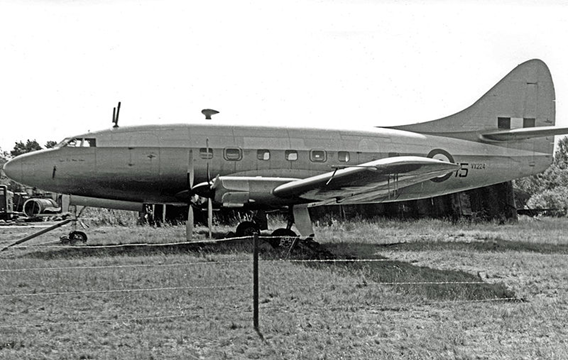
In 1945 George Edwards had taken over as Vickers Chief designer. Edwards, later Sir George Edwards, would become Managing Director of Vickers and later Executive Director of the British Aircraft Corporation. The Vickers VC.2 aircraft based on the Viking would have had four turboprop engines. However with the need for pressurisation, in 1946 Edwards kept the four engines but changed the design to a circular cross-section fuselage and had the fuselage extended to allow seating for up to 32 passengers. It was at this time the type gained the designation V.609 to be called the Viceroy. The government liked the design and ordered two prototypes but insisted they be powered by the Armstrong-Siddeley Mamba engine despite Vickers preferring the Rolls Royce Dart. Work on building the two prototypes finally commenced in December 1946. The following year, after pressure from the company, the government agreed for the aircraft to be built with Darts, Vickers had made provision in the nacelle design such that either engine could have been fitted. That same year following India’s independence and the removal of the title Viceroy of India it was quietly decided to rename the aircraft the V.630 Viscount.
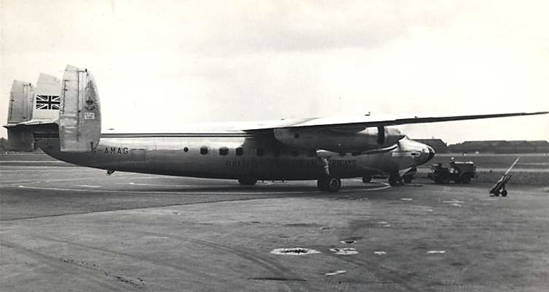
With work now picking up pace and with BEA still showing a strong interest it came as a shock to Vickers when in December 1947 BEA placed an order for 20 Airspeed Ambassadors. The reasons given at the time were that the Ambassador had much better economics as it could carry 47 passengers against the 32 of the Viscount also there was still much concern as to the reliability of the new technology of the turboprop engine. However BEA did hint that a Viscount with a greater payload could make it a profitable proposition. Vickers seriously looked at several proposals to enlarge the Viscount but the Dart engines of the time were not powerful enough for a bigger aircraft. With no order forthcoming from BEA the government hedged its bets and took back the second Viscount prototype and had it re-engined with two Rolls Royce Tay jet engines for the RAF to use for research and top secret trials including ‘fly by wire’ experiments.
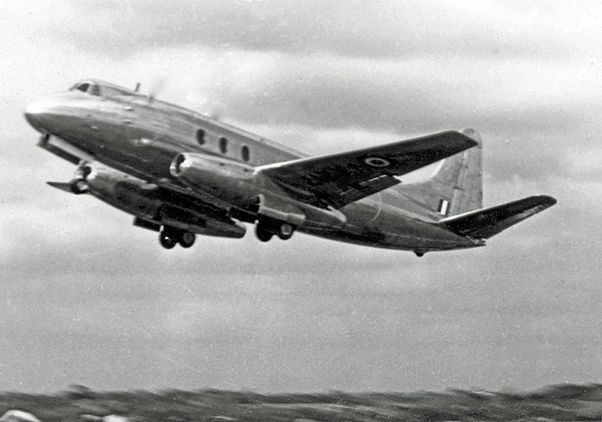
This test and trials career went on until 1958 when a fire in a wheel bay damaged the main wing spar and the aircraft never flew again. As well as the two government-funded prototypes Vickers had also begun construction at its own cost on a third. However with the lack of interest in the new airliner all work stopped and it was never completed. G-AHRF the first and now sole remaining prototype finally took to the air in July 1948. Painted in BEA livery she began a European tour in 1950 and was shown to several interested airlines. There then followed a trip to Africa for tropical certification trials after which the new airliner was finally granted its full C of A by the Air Registration Board (ARB), thus she could now carry fare-paying passengers.
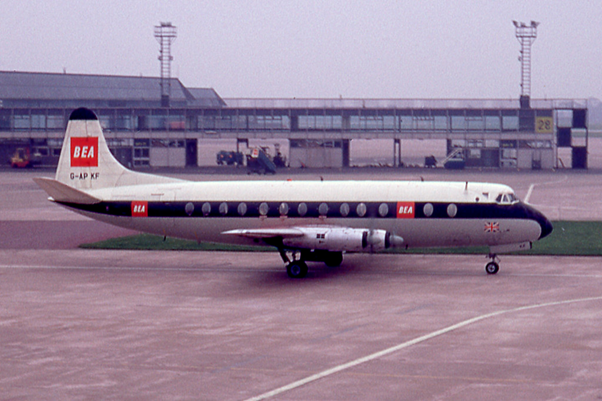
Still without any orders Vickers sent ‘HRF on an empty trial flight from Northolt to Paris and back. Following this on 29 July 1950, at Northolt, 14 commercial passengers and 12 special guests boarded her for a scheduled flight to Paris operated by a BEA crew, making history as the world’s first turboprop-powered scheduled airliner flight. After this flight ‘HRF continued for a few weeks to fly various BEA routes giving their staff a taste of Viscount operations, after all this ‘buttering up’ BEA finally placed an order in August 1950 for 20 Viscounts of the yet to fly larger V.700 series which would be able to carry 53 passengers. The 700 series prototype, registered G-AMAV, had been under construction at Weybridge for some time and thus only a few days after the ground breaking BEA order she made her maiden flight, this time flying direct from Weybridge in the hands of Jock Bryce. The new V.700 version was powered by Dart 504 engines which gave 1,400 SHP (Shaft Horse Power) each, a 40 per cent increase on the power available from the original V.630 prototype’s Darts. Now with an additional aeroplane under their belt Vickers could crack on with the testing and certification aiming for the desired BEA entry into service date of early 1953.
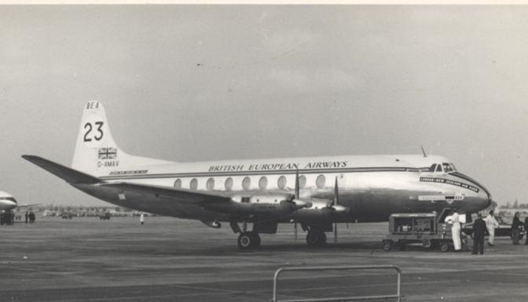
The item requiring the majority of the testing was of course the entirely new Dart turboprop engines. To gain more experience of the Dart in service Rolls Royce had installed Dart engines into their company DC-3. BEA followed suit with two of its DC-3 freighters which enabled them to cruise along at over 200mph at 25,000 feet with the flight crew having to wear oxygen masks as the aircraft were un-pressurised. Many an ATC controller was caught out by the Dart-Daks when he asked them to confirm their type and height! With all these extra Dart engines now in service the development and certification could be completed much quicker.
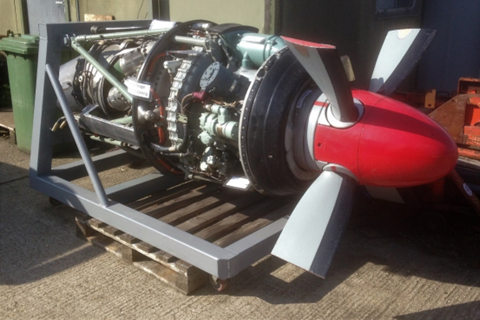
Finally in 1951 other airlines began to see the future was Viscount-shaped with Air France placing an order for twelve and Aer Lingus signing up for four of the V.700 series, BEA also upped its order to 26. By mid-1952 the V.700 prototype ‘MAV had achieved its full C of A and commenced a series of route proving flights for BEA plus demonstration and sales tours around the world. The original V.630 prototype ‘HRF was also still on trials duties, and it was during one such flight at Khartoum in August 1952 that the starboard undercarriage failed during heavy landing trials. The damage was terminal and the world’s first turboprop airliner was abandoned in Sudan.
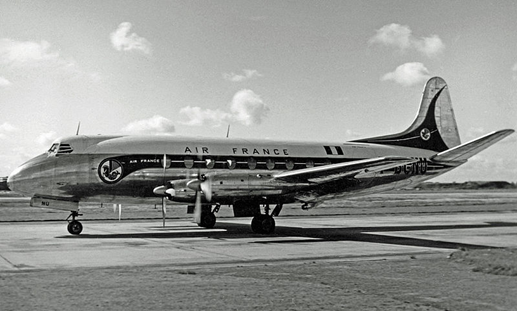
Just a week prior to the loss of ‘HRF the first production Viscount V.701, G-ALWE, for BEA had taken to the air with a cabin layout for 47 passengers. The end of 1952 brought a very significant order of 15 Viscounts from Canadian airline Trans Canada Airlines which would see the Vickers flagship arrive on the North American continent with eventual sales in the US to the likes of Capital (60), Continental (15) and Northeast (10). Trans Canada themselves would have a fleet of 51.
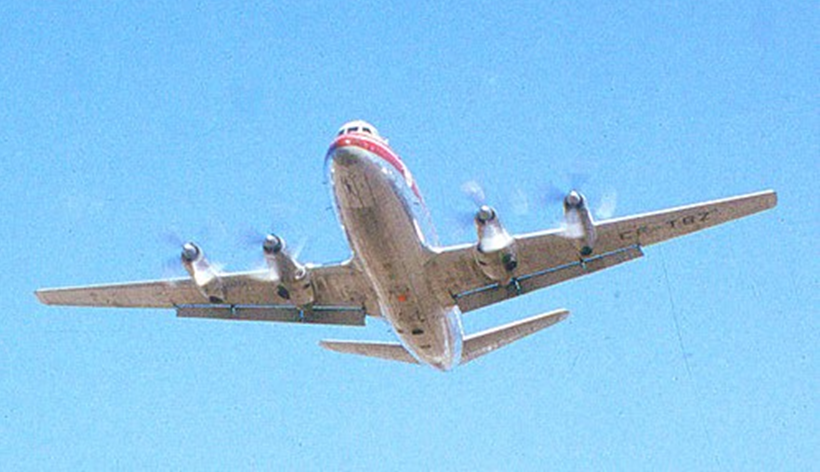
BEA finally took delivery of its first Viscount on 3 January 1953 when ‘LWE arrived at London Airport making it the first turboprop airliner to be delivered to any airline in the world, at that time a new Viscount was selling for £235,000. A month to the day prior to ‘LWE arriving with BEA the second production aircraft ‘LWF had taken to the sky and had joined the certification and route proving team before arriving with BEA on 2 February 1953. A couple of months later on 17 April 1953 the Viscount V.701 received its full C of A and BEA could now put its fleet to work with the first Viscount service to Rome making this the world’s first sustained turboprop service.
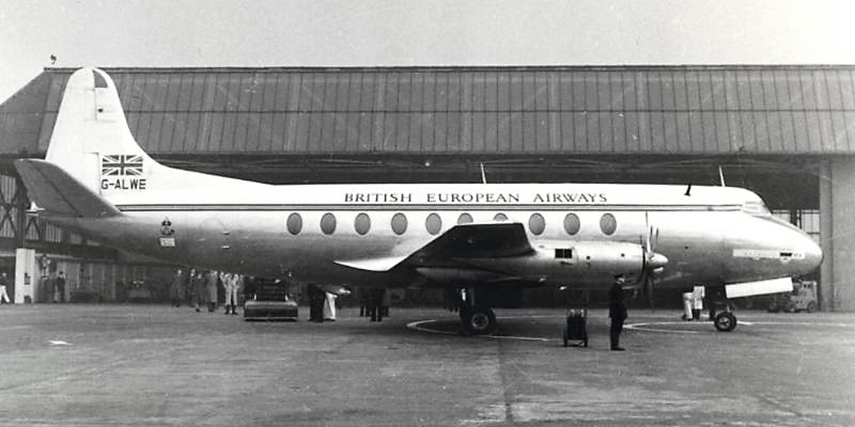
Many versions of the Viscount would be built bringing the total at the end of production in 1963 to 445 making it Britain’s best selling large airliner of all time. The Viscount would be operated by 60 airlines in 40 different countries with the last one operated in the Democratic Republic of Congo by Global Airways finally being retired in 2009. Thanks to the foresight of Rex Pierson, and the design genius of George Edwards the marriage of the Vickers designed airliner and the revolutionary Rolls Royce Dart turboprop became a resounding success.
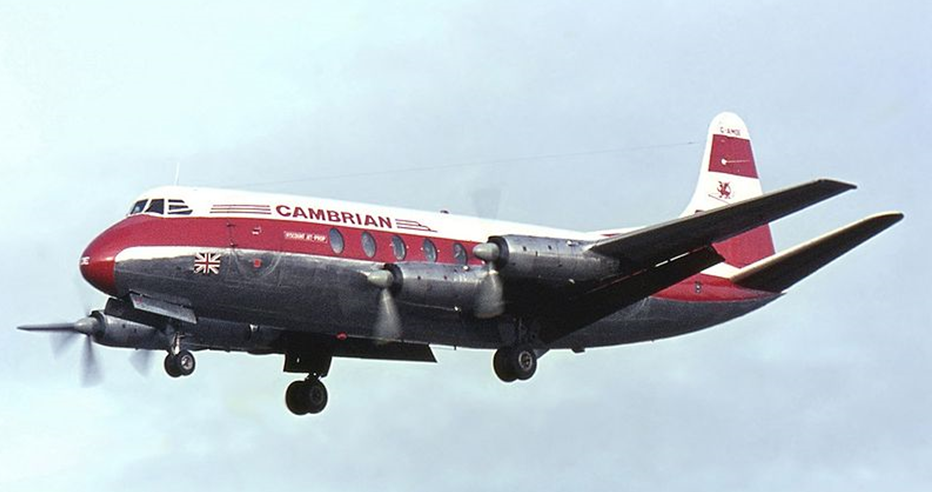
What happened to those early trail blazing Viscounts? As we have seen the original prototype ‘HRF was abandoned in Sudan after an undercarriage collapse. The second prototype was fitted with Tay jets and damaged beyond repair after a fire. The V.701 prototype,’MAV was withdrawn from use and stored at Wisley in 1960, with the fuselage going to the fire school at Stansted in 1963. The first production V.701 ‘LWE only had four years with BEA when it sadly crashed on approach to Ringway airport in March 1957. That just leaves the second production machine G-ALWF, the oldest surviving Viscount, which for many years has been with the British Airliner Collection at Duxford where it can be seen today as an example of when 75 years ago Britain really did rule the skies.
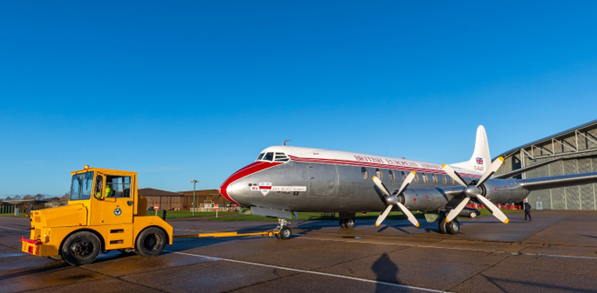
Keith Bradshaw
Registered Charity No. 285809